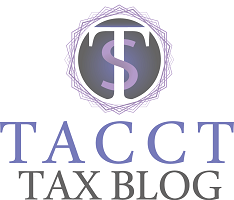Most taxpayers claim the standard deduction amount. The amounts are adjusted each tax year for inflation.
| Single | $5,950 |
| Head of household | $8,700 |
| Married filing jointly | $11,900 |
| Qualifying widow or widower | $11,900 |
| Married filing separately | $5,950 |
Standard deductions for older, visually impaired taxpayers
Taxpayers who are 65 or older, or who are blind, receive larger standard deduction amounts. Each is noted via a checkbox on Form 1040 and Form 1040A. The age and vision of each spouse is counted separately, meaning that an older couple could check up to four boxes. The final box count is used to figure the adjusted standard deduction amount.
| Filing status | Number of boxes checked | Standard deduction amount |
| Single | 1 2 | $7,400 $8,850 |
| Married filing jointly | 1 2 3 4 | $13,050 $14,200 $15,350 $16,500 |
| Married filing separately | 1 2 | $7,100 $8,250 |
| Head of household | 1 2 | $10,150 $11,600 |
For standard deduction amount purposes, if your 65th birthday was Jan. 1, the Internal Revenue Service considers you age 65 for the previous tax year and you may claim the larger standard deduction.
As for vision considerations, you may qualify for the larger deduction even if you are partially blind by attaching a letter from your physician attesting to your limited vision.
Standard deductions for dependent taxpayers
Sometimes you might file a return, for example, to get a refund of withheld money, even though you can be claimed as a dependent on someone else’s return.
In this case, a dependent taxpayer who is younger than 65 and not blind can take as a standard deduction the greater of $950 or his or her earned income plus $300. This deduction amount, however, cannot exceed the basic standard deductions for the dependent taxpayer’s filing status.
Itemized deductions
Although most taxpayers claim the standard deduction, all taxpayers may choose to itemize deductions and claim that amount if it is larger than their allowable standard deduction amount.
You must file Form 1040 and Schedule A to itemize.
Some itemized deductions are limited based on a taxpayer’s adjusted gross income, or AGI. Others are restricted to a threshold, or percentage, of the filer’s adjusted gross income.
| Medical expenses | Amount exceeding 7.5 percent of your adjusted gross income is deductible. Beginning with the 2013 tax year, this threshold increases to 10 percent for taxpayers younger than 65. |
| Mortgage loan interest | Generally, fully deductible for loans totaling $1 million or less ($500,000 if married filing separately) on your primary residence or second home. |
| Home equity loan interest | Generally, deductible for loans up to $100,000 ($50,000 if married filing separately) that are secured by your home. |
| Charitable contributions | Most are fully deductible as long as the gift amount does not exceed 50 percent of AGI. |
| Casualty losses | Deductible after subtracting insurance reimbursements, 10 percent of your AGI and $100. |
| Miscellaneous expenses | Amount exceeding 2 percent of AGI is deductible. |



